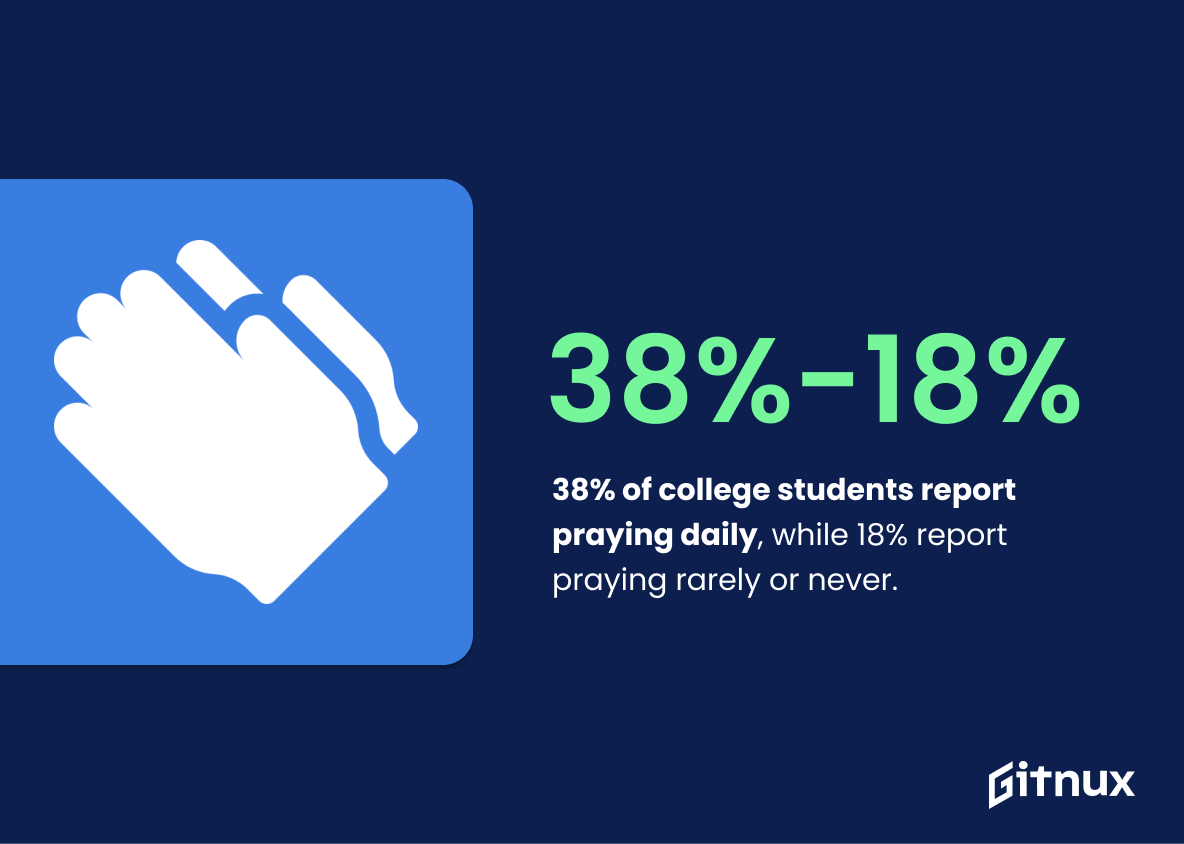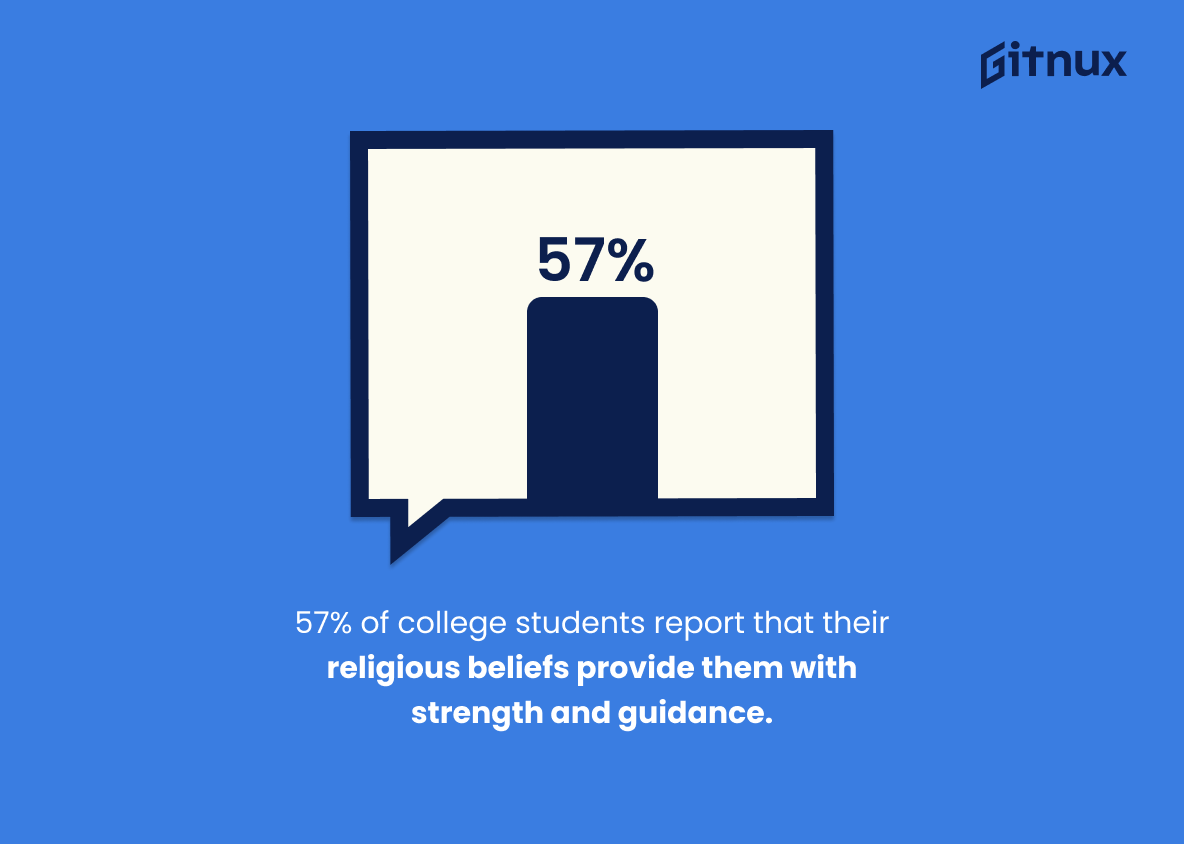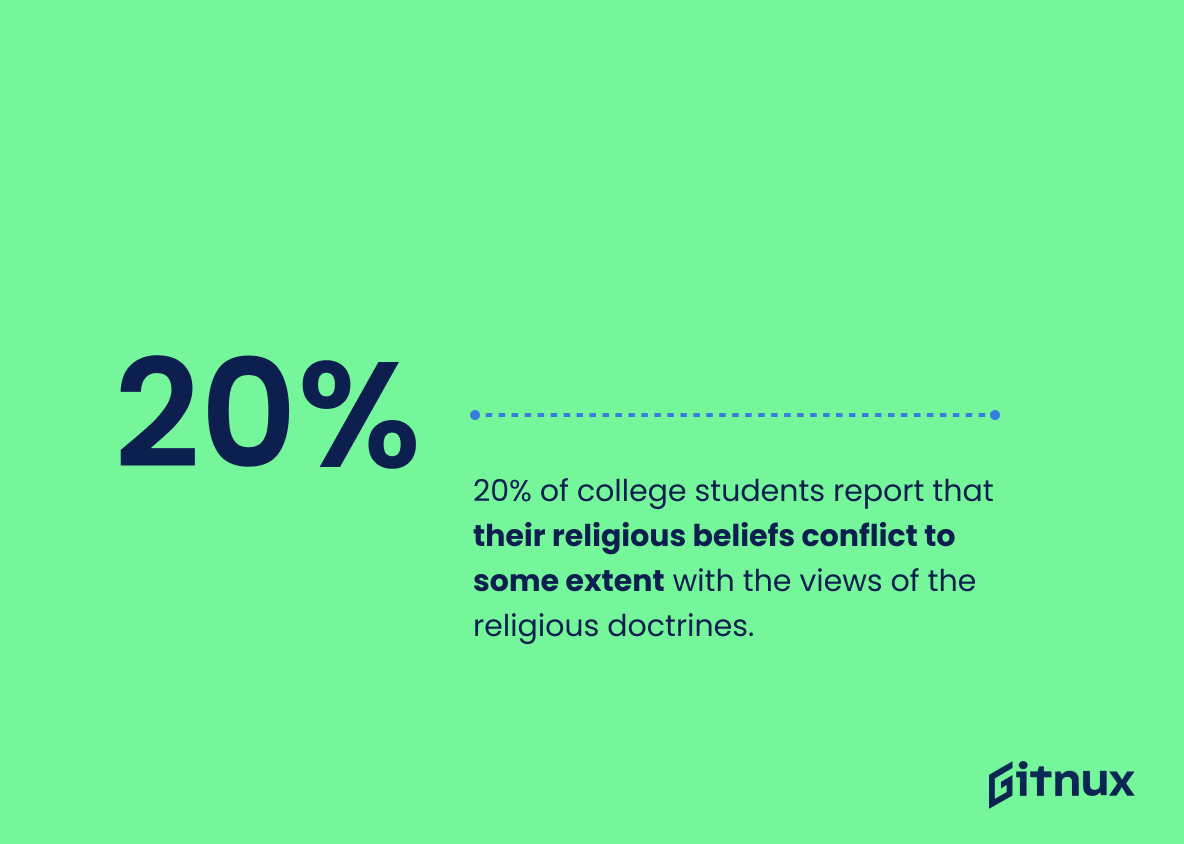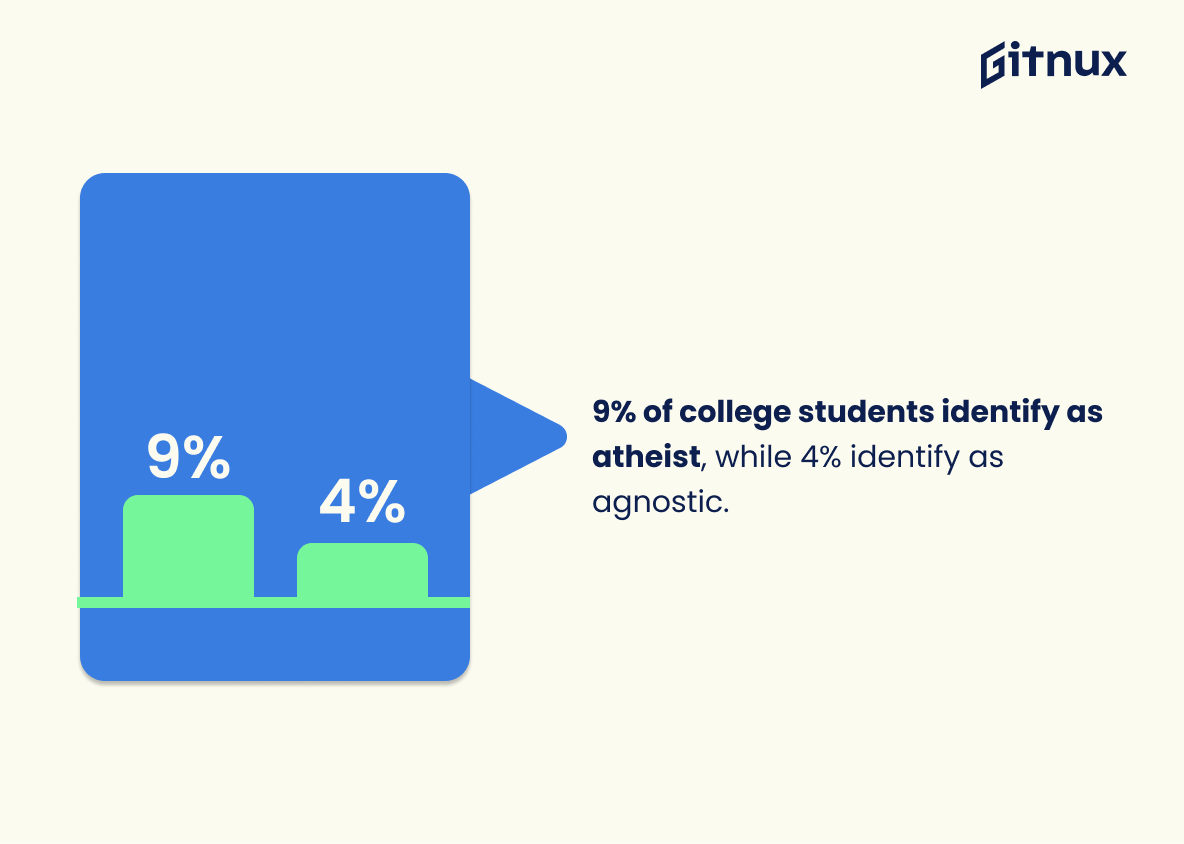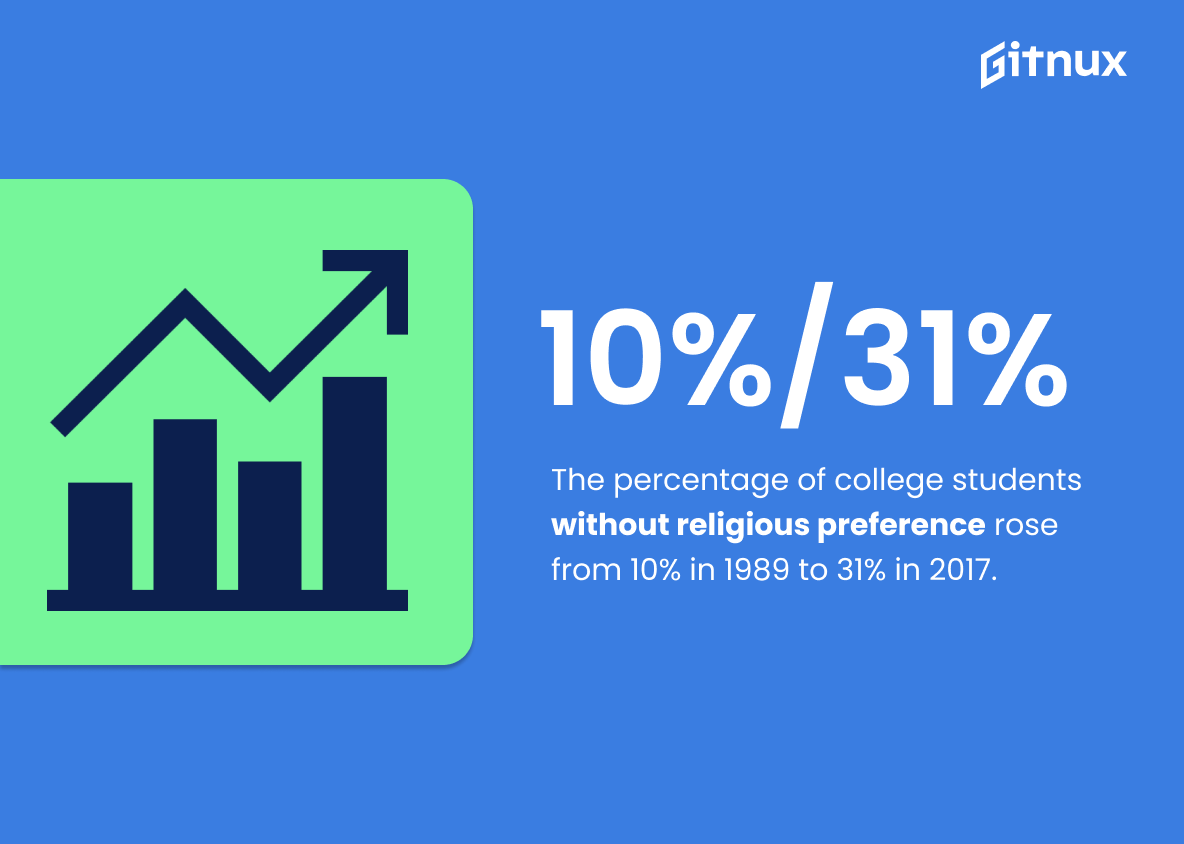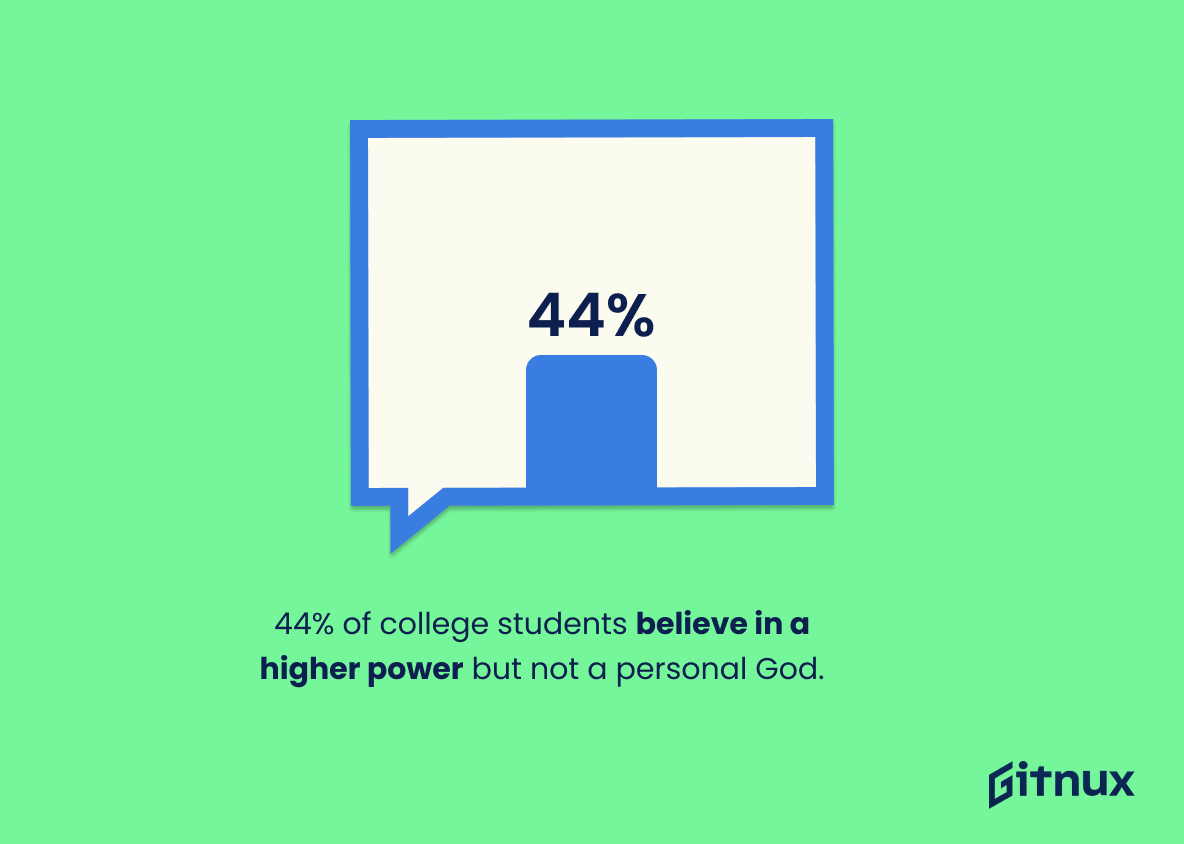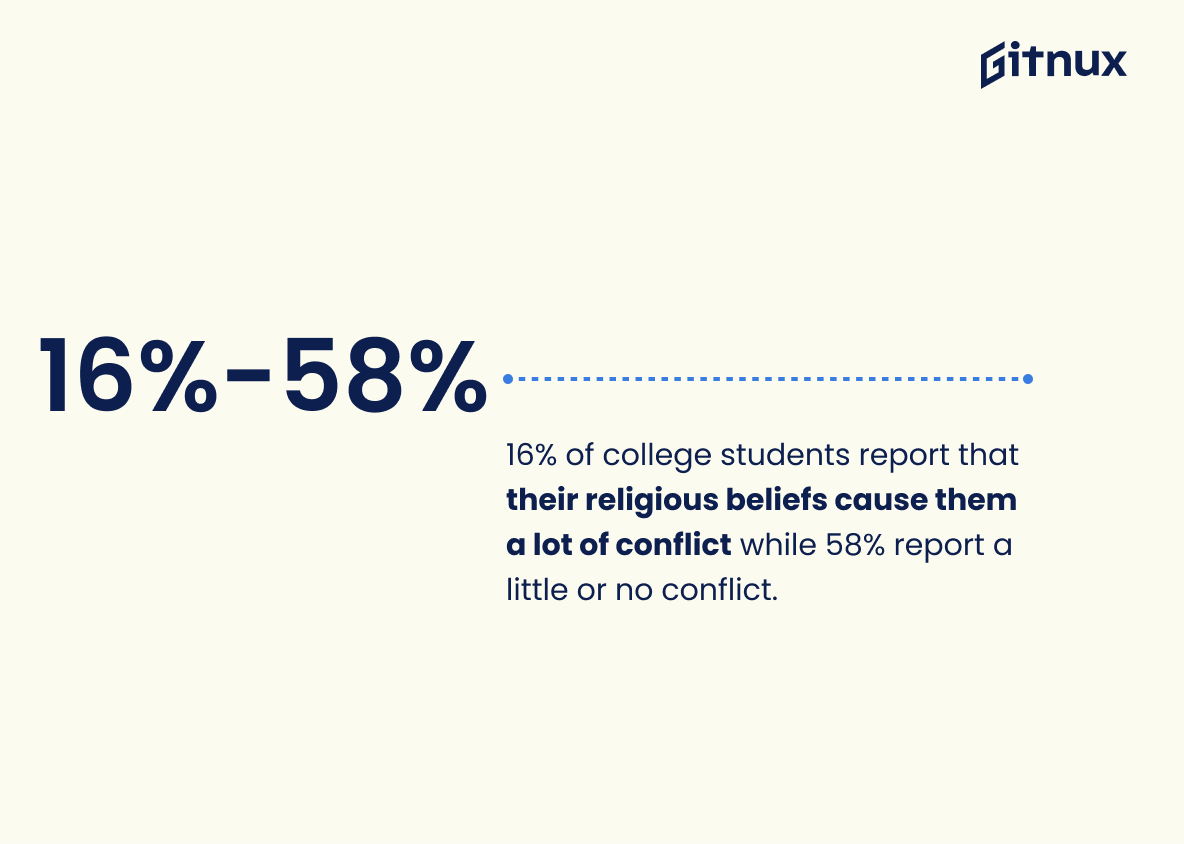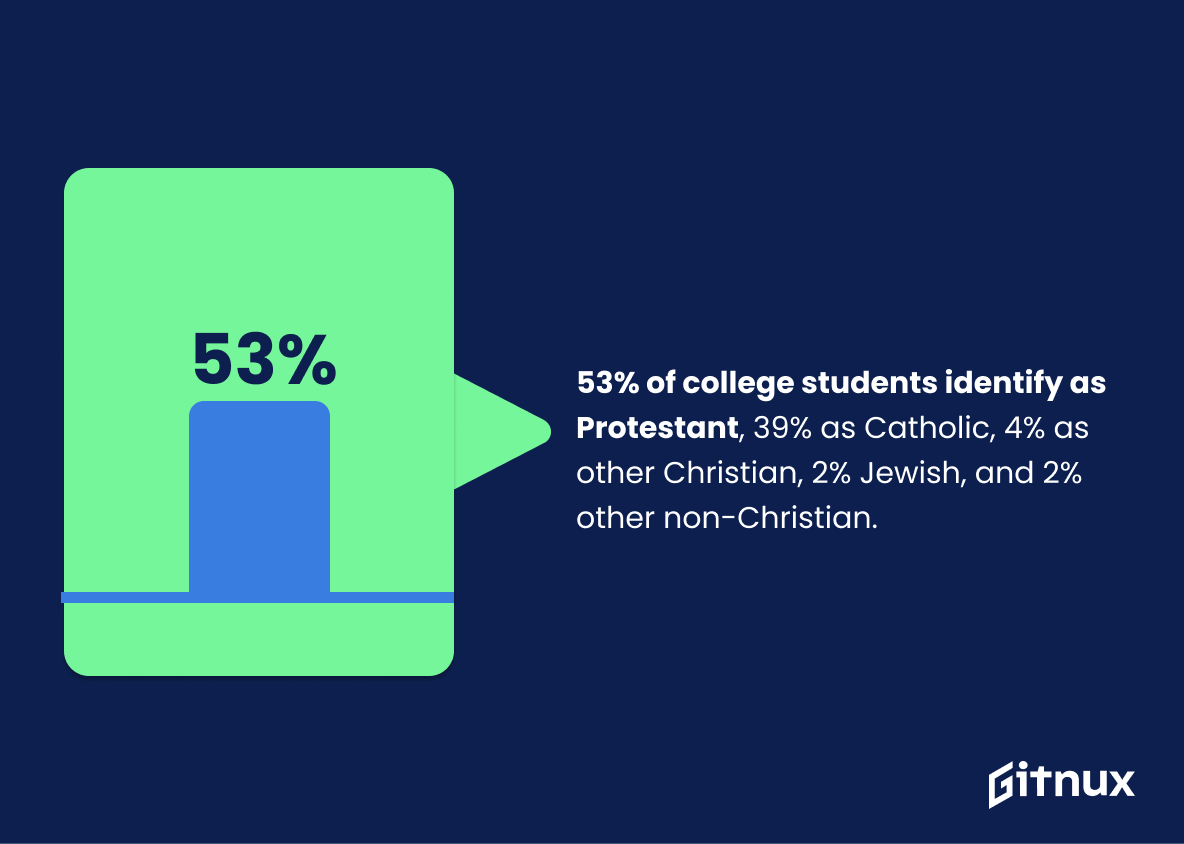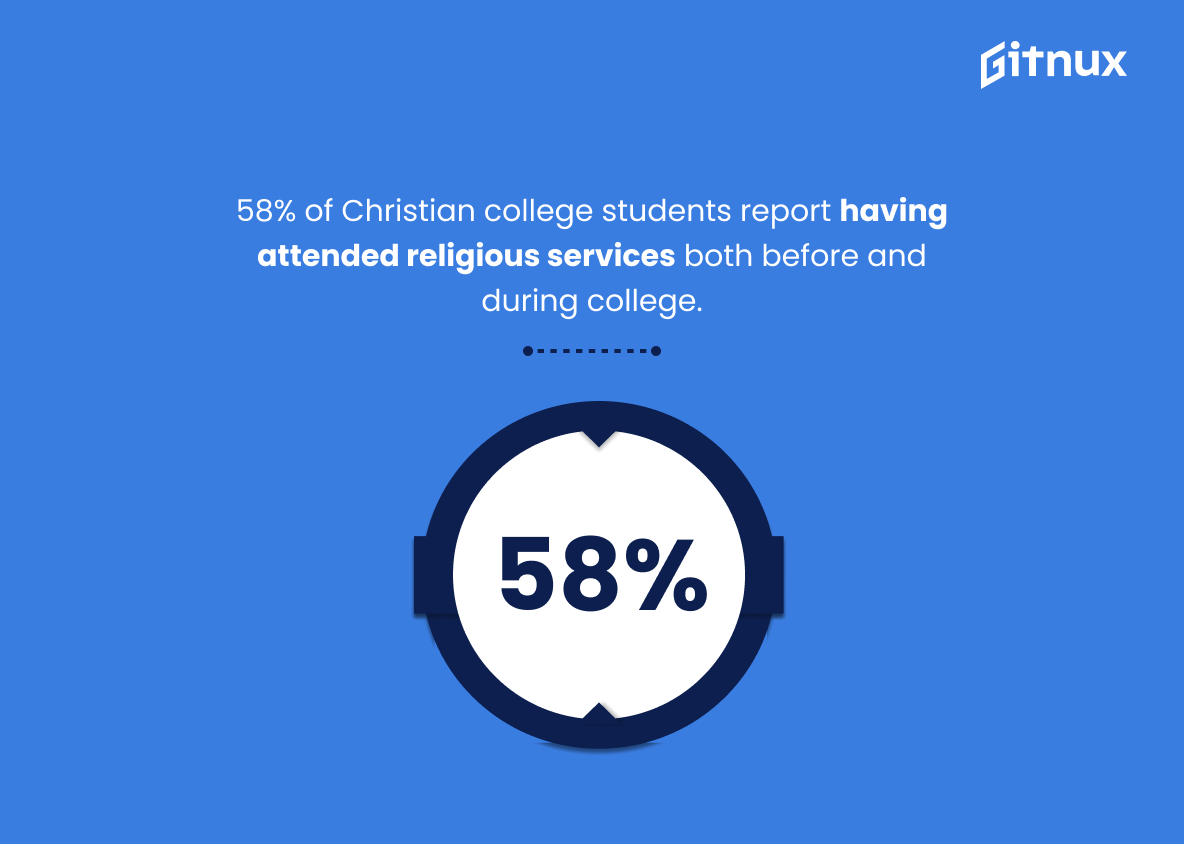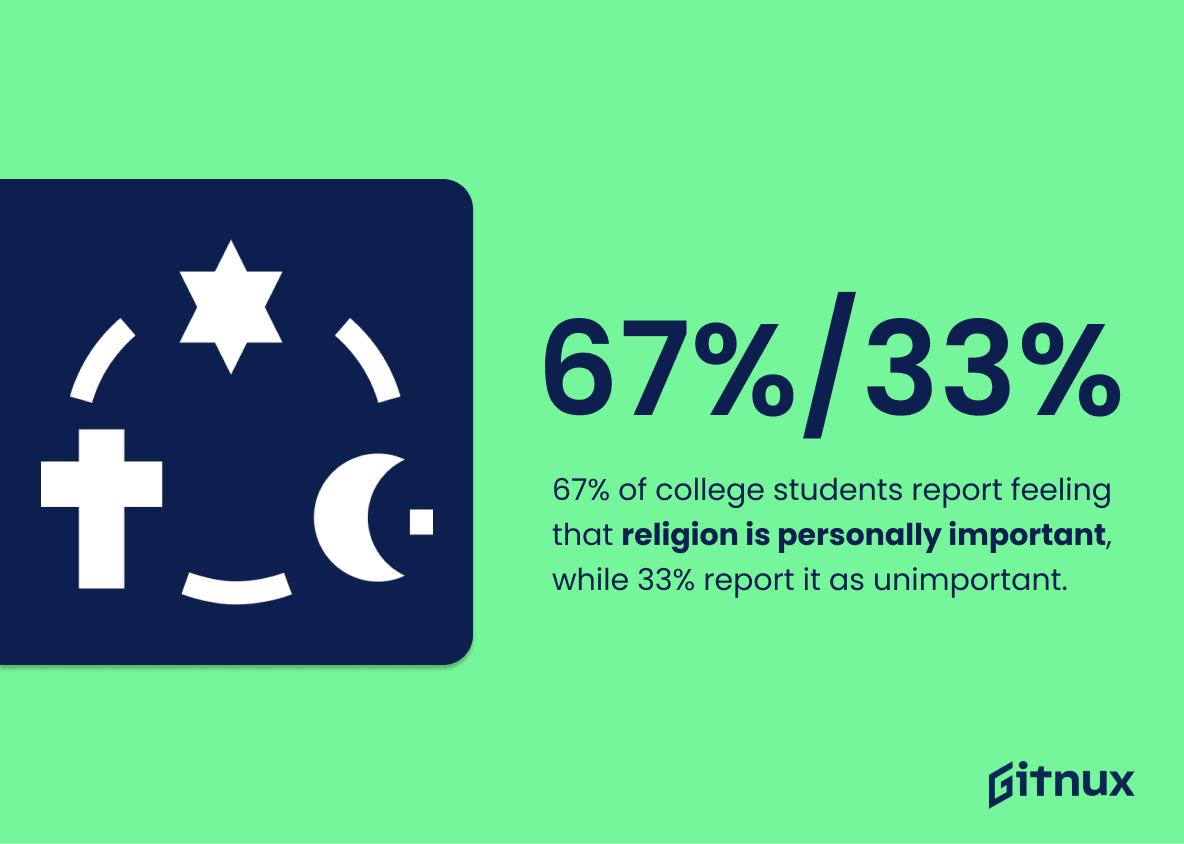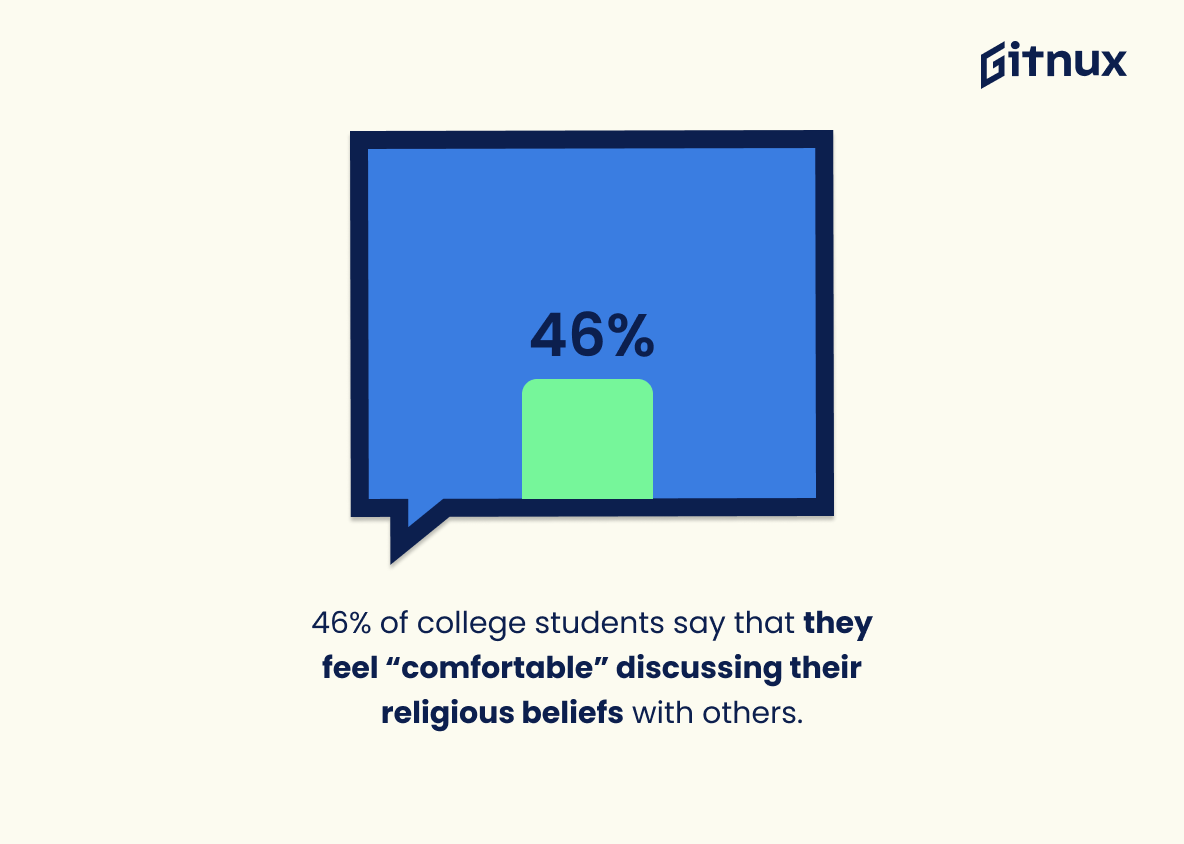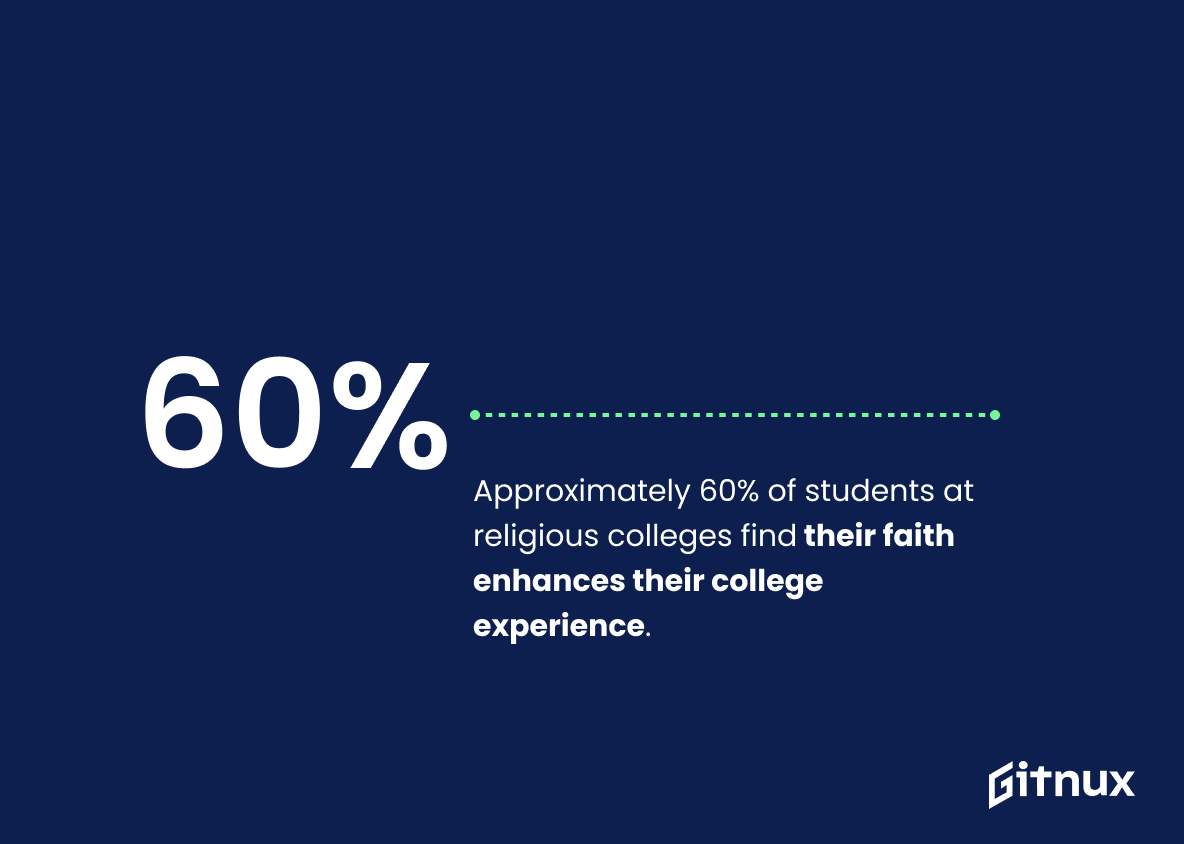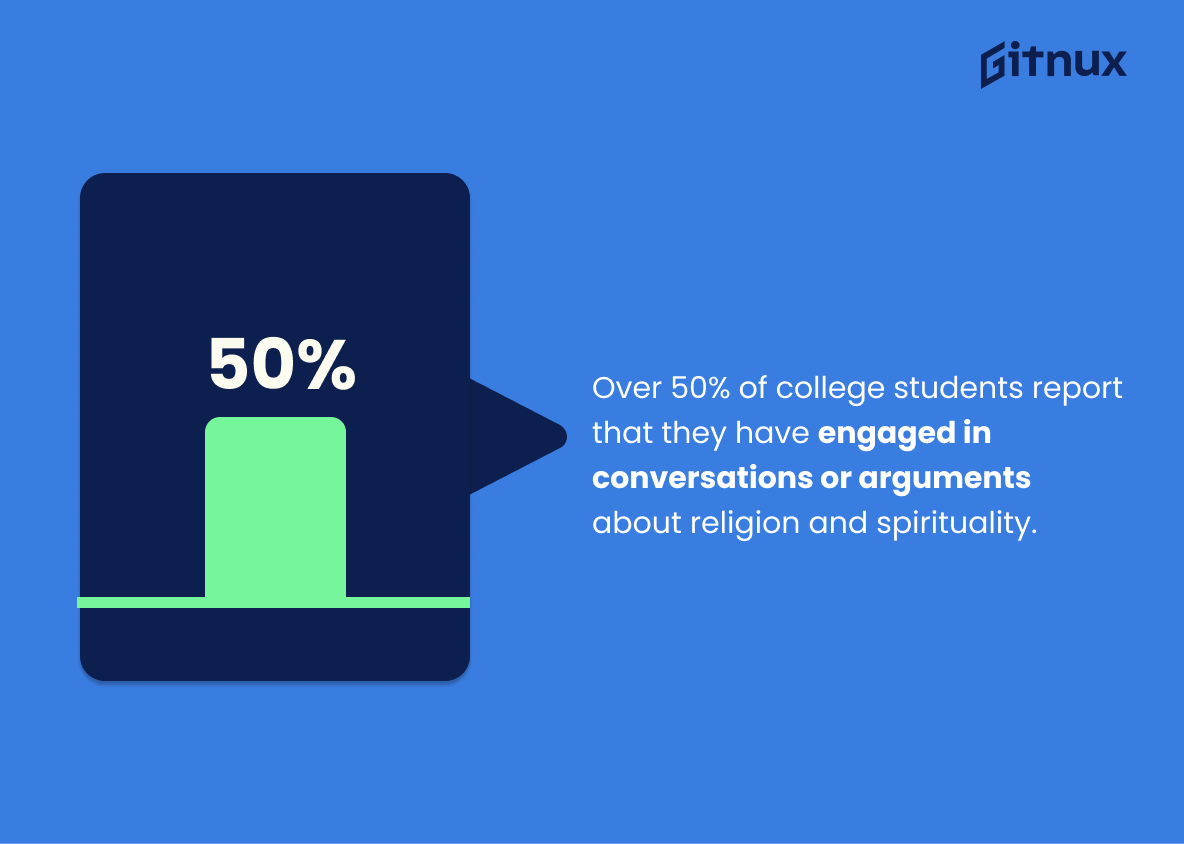Religion and spirituality are pivotal for many college students. Key findings reveal that 71% have a religious affiliation, 40% attend monthly services, and 38% pray daily. Meanwhile, 18% rarely or never pray. About 57% find strength in their beliefs, yet 20% experience conflicts with religious doctrines. Atheism and agnosticism are chosen by 9% and 4%, respectively. During college, 59% grow more religious, and 31% express no specific preference. In terms of beliefs, 44% believe in a higher power but not a personal God. The gender ratio among affiliated students is 45-37 female to male.
Faith conflicts are minimal for 16-58% of believers. Affiliations include 53% Protestant, 39% Catholic, and others. Notably, 58% of Christians continue attending services in college. Religion is personally important for 67%, and 46% are comfortable discussing it. Religiously affiliated colleges positively influence 60% of students. These statistics underscore the significant role of faith in young adults’ lives. Let’s delve into the most critical statistics about this topic.
This statistic is significant in understanding the religious landscape of American college students. It provides insight into the religious beliefs of the majority of college students, and can be used to inform conversations about the role of religion in college life. Additionally, it can be used to explore the impact of religious beliefs on college students’ academic and social experiences.
Approximately 40% of college students attend religious services at least once per month.
This statistic is a telling indication of the importance of religion in the lives of college students. It shows that a significant portion of college students prioritize their faith and make time to attend religious services on a regular basis. This statistic is important to co nsider when discussing the role of religion in the lives of college students, as it provides insight into the prevalence of religious practice among this demographic.
College Students And Religion Statistics Overview
38% of college students report praying daily, while 18% report praying rarely or never.
This statistic is a telling indication of the prevalence of religious practice among college students. It shows that a significant portion of college students are engaging in prayer on a daily basis, while a smaller portion are not engaging in prayer at all. This information is important to consider when discussing the religious beliefs and practices of college students, as it provides insight into the religious landscape of college campuses.
57% of college students report that their religious beliefs provide them with strength and guidance.
This statistic is significant in the context of a blog post about College Students And Religion Statistics because it demonstrates the prevalence of religious beliefs among college students. It shows that a majority of college students rely on their faith to provide them with strength and guidance, indicating that religion is an important part of their lives. This statistic can be used to further explore the role of religion in the lives of college students and how it affects their academic and social experiences.
20% of college students report that their religious beliefs conflict to some extent with the views of the religious doctrines.
This statistic is significant in the context of College Students And Religion Statistics because it highlights the complexity of religious beliefs among college students. It suggests that many students are struggling to reconcile their own beliefs with the teachings of their faith, and that this is a common experience. This statistic can be used to inform conversations about how to better support college students in their spiritual journeys.
9% of college students identify as atheist, while 4% identify as agnostic.
This statistic is significant in understanding the religious landscape of college students. It reveals that a relatively small percentage of college students identify as atheist or agnostic, indicating that the majority of college students still identify with a religious faith. This information is important to consider when discussing the religious beliefs of college students and how they may be changing over time.
59% of college students participating in religious clubs or organizations report increased religiousness during their time in college.
This statistic is significant in the context of College Students And Religion Statistics because it demonstrates the impact that college can have on religiousness. It suggests that college can be a place of spiritual growth and exploration for many students, and that participating in religious clubs or organizations can be a beneficial way to foster this growth.
The percentage of college students with no religious preference has increased from 10% in 1989 to 31% in 2017.
This statistic is a telling indication of the changing religious landscape among college students. It shows that the number of students who do not identify with any particular religion has grown significantly over the past few decades, suggesting that religion is becoming less important to college students. This is an important insight for anyone interested in understanding the religious beliefs and practices of college students today.
44% of college students believe in a higher power but not a personal God.
This statistic is significant in the context of College Students And Religion Statistics because it reveals that a large portion of college students have a belief in a higher power, but not necessarily a personal God. This indicates that college students are open to spiritual beliefs, but may not be as committed to traditional religious practices. This statistic can be used to further explore the spiritual beliefs of college students and how they differ from traditional religious practices.
16% of college students report that their religious beliefs cause them a lot of conflict while 58% report a little or no conflict.
This statistic is significant in understanding the relationship between college students and their religious beliefs. It shows that a large portion of college students experience some degree of conflict between their religious beliefs and their college experience, while the majority experience little or no conflict. This information can be used to inform conversations about how college students can best navigate their religious beliefs in the college environment.
53% of college students identify as Protestant, 39% as Catholic, 4% as other Christian, 2% Jewish, and 2% other non-Christian.
This statistic is significant in the context of a blog post about College Students And Religion Statistics because it provides a comprehensive overview of the religious affiliations of college students. It reveals that the majority of college students identify as Protestant, with Catholics making up the second largest group. Additionally, it shows that a small percentage of college students identify as other Christian, Jewish, or other non-Christian religions. This information is important for understanding the religious diversity of college students and how it may impact their experiences.
58% of Christian college students report having attended religious services both before and during college.
This statistic is significant in understanding the religious habits of college students, as it indicates that a majority of Christian college students are continuing to attend religious services while in college. This suggests that religion is still an important part of their lives, even as they transition into adulthood and college life. This statistic is important to consider when discussing the religious habits of college students, as it provides insight into how religion is impacting their lives.
67% of college students report feeling that religion is personally important, while 33% report it as unimportant.
This statistic is significant in understanding the religious beliefs of college students. It shows that the majority of college students consider religion to be an important part of their lives, while a minority view it as unimportant. This information can be used to inform conversations about how religion affects college life and how it is perceived by students. It can also be used to inform decisions about how to best support students of different religious backgrounds.
46% of college students say that they feel “comfortable” discussing their religious beliefs with others.
This statistic is significant in the context of College Students And Religion Statistics because it indicates that a majority of college students feel confident in expressing their religious beliefs to others. This suggests that college students are open to discussing their faith and that they are comfortable with the idea of sharing their beliefs with others. This could be an indication of a more tolerant and accepting attitude towards religion among college students, which could be beneficial for fostering a more inclusive and understanding environment on college campuses.
About 60% of students attending religiously affiliated colleges report that their faith has had a positive impact on their college experience.
This statistic is a powerful testament to the impact that faith can have on a college student’s experience. It shows that for many students, having a religious affiliation can be a source of strength and support during their college years. This statistic is important to consider when discussing the role of religion in college life, as it demonstrates the potential for faith to be a positive influence on students’ lives.
Over 50% of college students report that they have engaged in conversations or arguments about religion and spirituality.
This statistic is significant in the context of a blog post about College Students And Religion Statistics because it demonstrates the prevalence of religious and spiritual conversations among college students. It shows that religion and spirituality are topics of discussion that many college students are engaging in, and that these conversations are an important part of the college experience.
Conclusion
Based on the statistics presented, it is clear that religion and spirituality are important to many college students. While 71% of American college students identify with a particular religious affiliation, 40% attend religious services at least once per month and 38% report praying daily. Additionally, 57% of college students say their beliefs provide them strength and guidance while 20% experience some conflict between their own views and those of the doctrines they follow. Atheists make up 9%, agnostics 4%, Protestants 53%, Catholics 39%, other Christians 4%, Jews 2 %and other non-Christians 2%.
Furthermore, 59 percent of those participating in religious clubs or organizations reported increased religiosity during their time in college; 31 percent have no preference for any religion; 44 percent believe in a higher power but not necessarily a personal God; 16 percent feel conflicted by their faith while 58 percent do not; 25percent experienced spiritual growth during school years; 28percent identified as evangelical Protestant ; over 50percent engaged in conversations about religion/spirituality ; 60percent attending religiously affiliated colleges said faith had positive impact on experience . These numbers demonstrate how prevalent religion remains among today’s student population despite an increase from 10 to 31 percentage points since 1989 for those who claim no preference towards any one belief system.
References
0. – https://www.uscatholic.org
1. – https://www.josh.org
2. – https://www.tandfonline.com
3. – https://www.heri.ucla.edu
4. – https://www.heri.ucla.edu
5. – https://www.pewforum.org
6. – https://www.news.gallup.com
7. – https://www.link.springer.com
8. – https://www.nsse.indiana.edu
9. – https://www.spirituality.ucla.edu
10. – https://www.educationdive.com
11. – https://www.religioninpublic.blog
12. – https://www.nces.ed.gov
